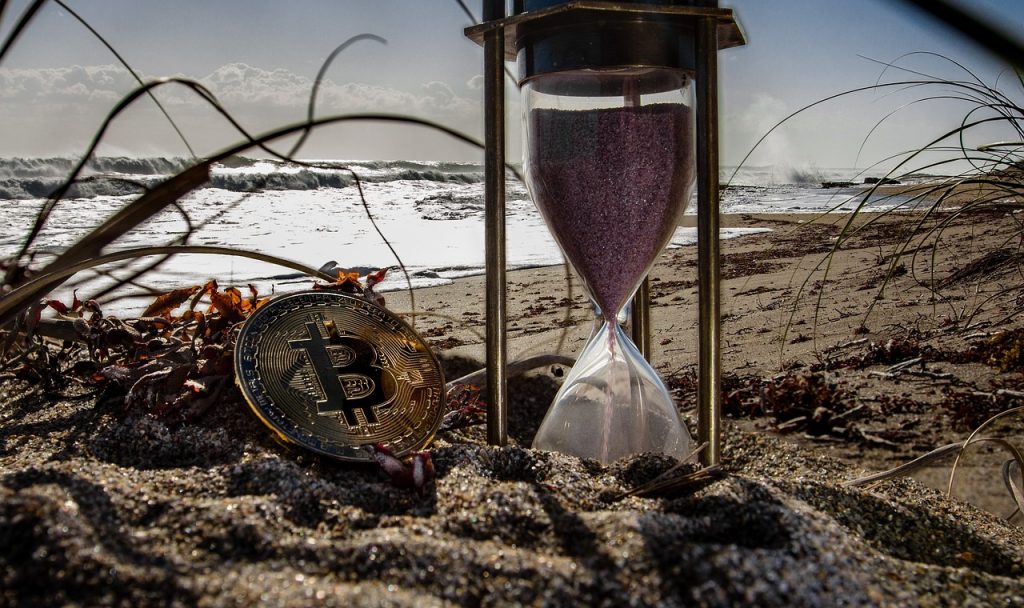My entry into the world of crypto began in 2012 with Bitcoin and from 2014 I was intensively involved with blockchain technology. At first I didn’t understand “IT” right away, but I liked the narrative of a decentralized monetary system and that of a global, programmable trust system right from the start. The concentration of power in the financial industry, the banking and payment systems, the problematic supply chains, the privileged access to global trade, all these topics could massively change blockchain technology for the better.

Example? The big 4, Visa, Mastercard, Amex and Discover control the payments market. Almost all credit card payments are processed through these companies and a handful of suppliers based on them. Those who try to coexist here hardly stand a chance. The payments industry is controlled centrally (e.g. merchants who end up on the TMF list – the “terminated merchant file list” are no longer able to get a merchant account with anyone to process payments).
Bitcoin means: no centralization, no discrimination, it just works.
But of course my crypto journey didn’t just end with BTC back then. Blockchain technology in general, Ethereum, Smart Contracts, DeFi and the amazing world of NFTs had to be discovered. People claimed that they would multiply their investment volume by 100x, 1000x and even 10000x with crypto projects and like many others I ended up in the rabbit hole early.
I read everything I could get my hands on about blockchain, had countless conversations and luckily I was living in the epicenter of the emerging crypto industry at the time, in Crypto Valley Zug. Very early on I learned the most important rules to survive in this jungle. The road was rocky, but the price is worth it.

Lesson 1: Man In The Mirror
I quickly learned my first lesson: “Rely on the Man In The Mirror and we’re not talking about Michael Jackson. There are no safe tips, no friendly advice, just hard work, i.e. extensive research. You can do this work yourself or you can delegate it, but it has to be done. Blockchain technology is a data paradise. Everything, really everything is transparent, you just have to know where to look. If you need a friend, get a dog. This applies not only to the stock market, but also to the crypto industry
Research is based on a clear checklist, without which no project should be purchased:
- What is the use case and/or benefit?
- What problem does it solve? What is the vision?
- What does the tokenomics look like? Inflation?
- How is the community doing? Is she just increasing the value of the coin or is she coming up with ideas to make the protocol better?
- How is the project financed? For how long?
- What is the narrative? Is the narrative popular now, if not what are the catalysts?
- How is the team? Experience? Proof of success?
- How does the project compare to the competition?
- What is the market capitalization? Big enough to survive, small enough for upside potential?
- Total Supply market cap?
- Are there any upcoming catalysts (the Ethereum merge, staking starts, partnerships, …)
- Is there a working product or at least an MVP) or just vaporware?
- Specialist community or influencer community? (out at the first red candle)
- Is the project decentralized or are there only a few owners, nodes, tokenholders?
- Studying Governance and Tokenomics?
- If this list has been processed positively, the next question is: how is BTC and/or ETH?
- Where are we on the rainbow chart?
- Where is the F&G index?
- What are the key on-chain metrics saying? BTC hash rate? BTC Difficulty?
- Alts follow BTC and ETH usually by multiples: BTC up 5%, Alts up 25%. Conversely, the discrepancy can be even higher.

The list does not claim to be complete.
Lesson 2: Cinderella Concept or Take Profit
With the above checklist you are unstoppable, because fraudulent projects or fakers are eliminated and in the bull market everything (processed according to the checklist) goes up!
Everyone thinks: OMG what a genius I am! Well, in the bull market, so is almost everyone else. You just have to invest in “something” that has a good story, a low market cap, and enough influencers to cover it.

Now comes the hard part: the Cinderella concept. At midnight, when the party is in full swing, you have to leave, even if you lose a shoe (Cinderella). Nothing goes up forever and over 99% of these altcoins will go back to 0 and never be heard from again. Crypto moves in cycles and plays a highly complex psychological game. If you take winnings with you in time and leave the party at midnight, you will almost always win. But only a few can do that. Only very few mentally manage to go home in the uncertainty that the party could go on for hours at a top level and possibly even develop into the greatest party “EVER”. That’s why many end up like “The Hangover,” Las Vegas version, the morning after.

Here is an example take profit plan for a mooncoin:
- Coin does a 2x, take out 50%, original position stays at 100%
- Coin makes a 5x, take out another 50%, original position stays at 250%, profit up to now 350%
- Coin makes a 10x, take out another 80%, original position stays at 500%, profit 2350%
- Coin has 80% bear loss, value goes back to original position but you still enjoy your 2350% profit. If the value rises again, you are in with your original starting value. If not, you’re sitting on 23.5 times your investment.
In this example, a bag holder goes up to 10,000%, comes back down to 2000% (you’re at 2450% overall). If the value goes to zero, the BagHolder loses everything, you sit on 23.5 times your investment. Sounds easy, but very few do it. To explain that, you would need a book called: “The Mooncoin and Human Psychology”.
A bag holder with a total loss, after a theoretical 10000% paper gain, is usually mentally very damaged.
With the Cinderella concept, you always get your investment back after the first round. That always means psychological strength! If your Mooncoin falls away right from the start, a 5% stop loss can help.
Conclusion: Taking profits is a difficult feeling for beginners, especially if the coin increases 2, 3 or 10x after the sale. You will NEVER sell the top and even if it goes further up you still have your moonbag. After more than 10 years of experience in this particular market, I can say with a clear conscience: if you follow this method, 99% of the time you will look back happily on this decision when the market goes through the next bear market.
Lesson 3: Risk Management or Small Loss = Small Problem, Big Loss = Big Problem
Manage your risk with a risk management plan. Setting stop-loss orders or using other risk management techniques can go a long way towards stress-free trading. This minimizes potential losses. it takes 11.1% gain to recoup a 10% loss. A 50% loss needs a 100% gain to make up for it. Setting stop-loss orders will prevent you from losing too much if the asset’s price moves against you.

In addition, a risk-reward ratio calculates the measure of a potential gain (by setting a profit target) versus a potential loss (stop-loss point) on a trade, giving an indication of whether worth the risk.
Even more important is the diversification (diversification) of your portfolio. Too much emphasis almost always leads to problems. Spreading investments across a range of different assets helps mitigate risk, protects against possible catastrophe and sleepless nights. If an asset performs poorly, this can be offset by the performance of other assets (hedge) in the portfolio.
A long-term perspective, rather than relying on short-term price movements, can also help reduce risk, as long-term assets are usually less volatile and therefore have a lower risk of loss. With the exception of BTC and ETH, no asset should make up more than 5% of the portfolio.
Lesson 4: Asset Allocation or “Not different eggs in one basket” but “a few eggs in different baskets”
Asset allocation, i.e. the division of an investment portfolio into different asset categories such as real estate, stocks, crypto and cash, is an important aspect of an investment strategy. Proper asset allocation can help spread risk and hedge profit-taking from the crypto market. In a bull market, everything is always fine: everything goes up, everything flies. Especially when the central banks’ money printing machines are running hot. But it will never go on like this forever. Diversification is key, not just with cryptocurrencies but in general. The total net worth in cryptocurrencies is extremely volatile. In a bull market, you can be a multi-millionaire on paper in no time and be zero with the wrong tactics. Imagine if you held all your wealth in Luna, or in UST, or in Celsius, or in FTT?

Taking profits from cryptocurrencies and reallocating them to other assets like real estate, stocks, gold, silver is never a bad idea. Or maybe an investment in yourself? Antique car? World trip?
Lesson 5: If things go wrong, don’t go with them
Accepting that I made a mistake, analyzing where I was wrong, isn’t usually people’s best traits. However, we are human and not perfect. It is not a question of “if” but of “when” we will make a mistake. There’s nothing wrong with being wrong, but staying wrong is wrong.
In 2022 there were three Black Swan events: Luna, Celsius and FTT.
Luna, “would be the ultimate powerhouse” when it comes to stablecoins, Celsius, the ne plus ultra of passive mega-income, FTT, the world trading house, powered by the White House,… ..

In retrospect, of course, we all know that these theses were wrong. When you realize you’re wrong, waiting is the worst of all options. This is where the famous “Leave It, Change It or Love It” comes in handy.
Limit losses, analyze situation and move on. Hoping for a miracle is not a strategy. That’s usually dangerous. “Get up one more time than you’re knocked over,” said Winston Churchill.
Lesson 6: Technical Security or “I Am Unhackable”
The shortest but perhaps most important point of all. You did everything right, followed points one to five and are sitting on a nice fortune. You know your public key and look at your assets several times a day. But you can’t do anything with it. Once upon a time you made a small mistake. Opened a phishing email, printed out the seed phrase and placed it on the south-facing window sill, didn’t use a VPN, used WiFi at McDonalds or Starbucks, didn’t buy a LAN cable, didn’t make any backups or made backups from cheap clouds, used a smartphone and lost it, and so on further, dhe list is endless. Unless you can operate a hardware wallet and have proper key management, you should do NOTHING.
Summary
1) Hard research work and personal responsibility, 2) Cinderella takes profit, 3) Managing risk, 4) Putting eggs in different baskets, 5) BlackSwan happens and 6) YKYC (Your Keys Your Coins)
It’s actually very simple!
No hopium is scattered here, but emphasized that this market is anything but a game. However, open discourse can only be effective if the recipient is ready for it. That’s why I recommend reading this article a few more times or getting professional help that works with this method. Never give anyone your assets. Never.
Greetings from sunny Italy
Bergwolf

